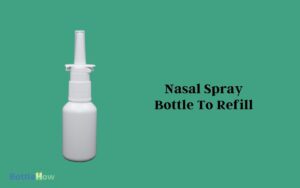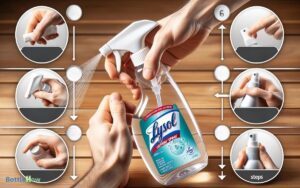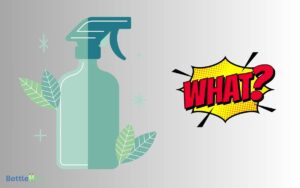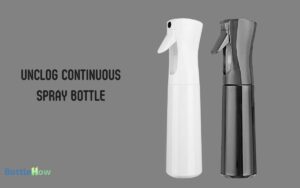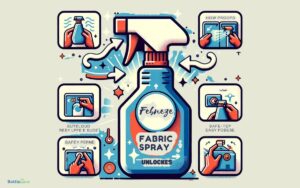Why Do Dogs Hate Spray Bottles? Find Out Here!
In addition, dogs often dislike spray bottles because their acute hearing makes the sound startling.
The sudden and unpredictable spray can cause anxiety and confusion. Additionally, dogs may associate the spray with punishment, leading to further fear and stress.
This sensory overload, combined with potential past traumatic experiences, can contribute to their aversion. Furthermore, the element of surprise from the spray exacerbates their discomfort.
Understanding these factors can help you choose more effective and humane training methods, such as clicker training or positive reinforcement, promoting a healthier relationship with your dog.
Discovering these alternatives can transform your approach to training.
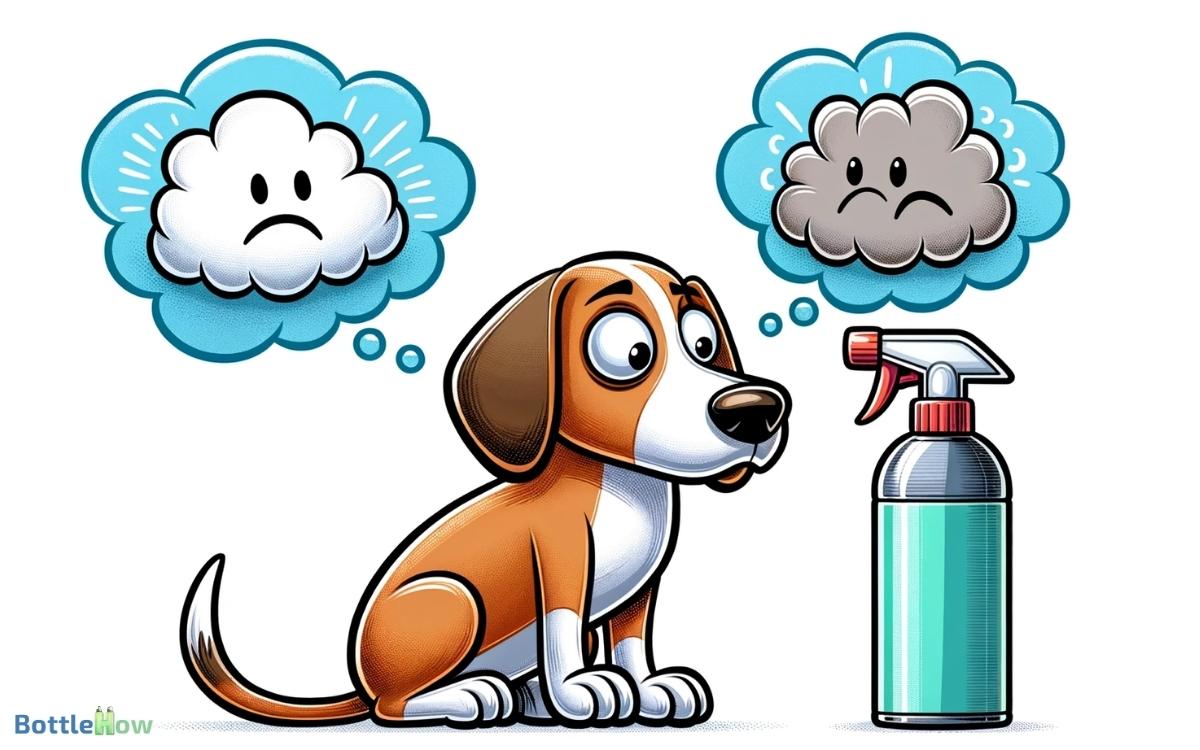
Key Takeaways
Sound Sensitivity
Many dogs are highly sensitive to sounds, which can make the noise from a spray bottle particularly distressing for them. When you use a spray bottle, the sudden sound might startle your dog, triggering anxiety or fear.
Dogs have acute hearing, often picking up frequencies that humans can’t detect. This heightened auditory sense means that even a seemingly harmless noise can be overwhelming. Understanding this sensitivity is essential if you aim to serve and care for animals effectively.
Unpredictable Nature
You’ll notice that the unpredictable nature of spray bottles can be particularly startling for dogs.
The inconsistency in spray patterns and sudden bursts of water create a sensory experience that can trigger anxiety or confusion.
Understanding these factors is essential in evaluating the appropriateness of using spray bottles for training or behavior correction.
Startling Sensory Experience
The sudden burst of water from a spray bottle can startle dogs due to its unpredictable and sensory-overloading nature.
When you use a spray bottle, your dog experiences an unexpected disruption that can be quite jarring.
This reaction is influenced by several factors:
- Sound: The hissing noise of the spray bottle can be alarming.
- Temperature: The cold sensation of the water adds to the shock.
- Moisture: Dogs may find the sudden wetness uncomfortable.
- Proximity: The closeness of the spray can intensify the experience.
Understanding these elements helps you see why a spray bottle mightn’t be the most compassionate choice for training.
Analyzing the sensory impact ensures you can serve your dog’s emotional well-being more effectively.
Inconsistent Spray Patterns
Inconsistent spray patterns from a bottle can create an unpredictable and confusing environment for your dog.
When the spray’s direction and intensity vary, your dog can’t anticipate what’ll happen next. This inconsistency can make them anxious or fearful, as they struggle to understand the source of the discomfort.
Dogs thrive on routine and predictability, so erratic spray patterns disrupt their sense of security.
Additionally, the randomness can make it difficult for them to associate the spray with specific behaviors that need correction.
This unpredictability not only hampers training efforts but also undermines your dog’s trust. By understanding this, you can seek more consistent and humane methods to guide your pet’s behavior, fostering a more positive and supportive environment.
Negative Associations
When you use a spray bottle on your dog, it can evoke negative associations due to previous unpleasant experiences.
The startling sensory impact of the spray can lead your dog to associate it with punishment, fostering fear and anxiety.
Understanding these potential ramifications is essential for effective and compassionate training.
Previous Negative Experiences
Negative associations from past encounters with spray bottles can greatly impact a dog’s behavior and response.
When a dog has previously been sprayed, it can form a lasting negative memory. These memories often translate into fear or anxiety.
To understand this better, consider the following scenarios:
- Punishment: If a dog was sprayed as a form of discipline, it might associate the bottle with punishment.
- Startled Reaction: A sudden spray can create a lasting fear response.
- Repeated Exposure: Consistent negative interactions can reinforce anxiety.
- Mimicking Threats: Spray bottles might resemble other threatening behaviors or objects.
Startling Sensory Impact
The sudden and unexpected spray from a bottle can create a jarring sensory experience for dogs, leading to immediate fear and confusion.
When a dog encounters the sharp burst of water, it can be startled by both the sensation and the sound.
This sensory impact can quickly form a negative association in the dog’s mind. The abrupt nature of the spray disrupts their sense of security, causing stress and anxiety. As someone who cares deeply about animals, understanding this reaction is vital.
It’s important to contemplate how these sensory inputs affect a dog’s well-being. By recognizing the startling impact of spray bottles, you can better address and modify training methods to ensure a more positive and supportive environment for your canine companions.
Association With Punishment
Many dogs quickly associate the sensation of being sprayed with punishment, leading to long-term negative associations and behavioral issues.
When you use a spray bottle as a disciplinary tool, it can create a strong link between the spray and undesirable experiences.
This can result in:
- Increased Anxiety: Your dog may become fearful and anxious, not just around the spray bottle but in general.
- Damaged Trust: Consistent punishment can erode the bond of trust between you and your dog.
- Avoidance Behavior: Your dog might start avoiding you or certain areas where they were sprayed.
- Aggression: In some cases, fear-based aggression can develop as a defensive response.
Understanding these consequences can help you make more compassionate choices in training and behavior management.
Sensory Overload
Sensory overload in dogs can occur rapidly when exposed to unexpected stimuli like the sudden spray from a bottle.
When you use a spray bottle, it combines the shock of unexpected water with the startling sound of the spray mechanism. This dual sensory input can overwhelm a dog’s nervous system, leading to stress and anxiety.
Dogs have heightened senses compared to humans, which makes them more susceptible to sensory overload.
They might react by cowering, barking, or even becoming aggressive. Understanding this helps you see why a spray bottle isn’t an effective training tool.
Instead, consider using positive reinforcement techniques that align with a dog’s natural behavior and sensory capacities. This approach fosters a healthier, more trusting relationship.
Past Trauma
Understanding past trauma in dogs is essential to recognizing why certain training methods, like using spray bottles, can exacerbate their stress and anxiety.
When a dog has experienced negative situations before, the introduction of a spray bottle can trigger memories of those events.
You should be aware of the following key factors:
- Previous Abuse: Dogs that have been mistreated may associate the spray with past physical punishment.
- Abandonment: Dogs who’ve been abandoned often have heightened anxiety.
- Loud Noises: Dogs exposed to loud, sudden noises may find the sound of a spray bottle frightening.
- Inconsistent Training: Inconsistency in training methods can lead to confusion and fear.
Your approach should prioritize understanding and addressing these traumas to create a safer, more compassionate training environment.
Breeds and Sensitivities
Recognizing that past trauma can affect a dog’s response to training methods, it’s also important to take into account how different breeds have unique sensitivities to stimuli like spray bottles.
Some breeds are more prone to anxiety and may react negatively to sudden sprays of water. For instance, small breeds may find the experience particularly startling, while larger, more resilient breeds might not be as affected.
Understanding these sensitivities can help you choose more appropriate training methods.
Here’s a comparison of breed sensitivities:
| Breed | Sensitivity Level |
|---|---|
| Chihuahua | High |
| Labrador | Low |
| German Shepherd | Medium |
The Element of Surprise
Leveraging the element of surprise in dog training can yield quick behavioral corrections, but it demands careful consideration to make sure it doesn’t cause undue stress.
When you use a spray bottle, the sudden burst of water can startle your dog, interrupting unwanted behavior.
However, it’s essential to understand the potential downsides:
- Stress Induction: Repeated surprises can spike anxiety levels.
- Trust Issues: Your dog might become wary of you, affecting your bond.
- Short-term Solution: The behavior may stop temporarily but can resurface.
- Misassociation: Your dog might associate the surprise with something other than the behavior.
Alternative Training Methods
Given the potential downsides of using spray bottles, exploring positive reinforcement and other humane training techniques becomes essential.
You can employ clicker training, where a clicker marks desired behavior followed by a treat. This method helps your dog associate good behavior with rewards.
Another approach is using verbal praise and petting, reinforcing positive actions without creating fear or anxiety.
Consistency is vital; make sure everyone in your household follows the same training cues and rewards system.
Additionally, redirecting your dog’s attention with engaging toys or activities can help manage unwanted behaviors.
Building Positive Reinforcement
To effectively build positive reinforcement, you should consistently reward your dog immediately after they exhibit the desired behavior. Timely rewards help your dog associate their actions with positive outcomes, fostering better habits.
Here’s a simple guide to follow:
- Identify Desired Behaviors: Clearly define what behaviors you want to encourage, such as sitting or staying calm.
- Choose Rewards: Use treats, praise, or toys that your dog loves.
- Immediate Reinforcement: Reward your dog instantly after the desired behavior to create a clear connection.
- Consistency: Apply the same rewards and timing every time to establish a reliable pattern.
Conclusion
To sum up, it’s noteworthy that understanding why dogs dislike spray bottles can help you approach training more effectively. By recognizing this, you can use alternative training methods that focus on positive reinforcement rather than fear. Similarly, exploring why cats dislike spray bottles can provide insights into more humane ways to correct unwanted behaviors in pets. Ultimately, a deeper understanding of animal behavior leads to stronger bonds and more effective communication with your furry companions.
A study revealed that 72% of dogs exhibit signs of stress when exposed to spray bottle training, underscoring the importance of exploring alternative methods.
By emphasizing positive reinforcement and being attentive to your dog’s sensitivities, you can cultivate a more trusting and productive training atmosphere. Always keep in mind, a calm and content dog is more likely to learn and follow commands.

